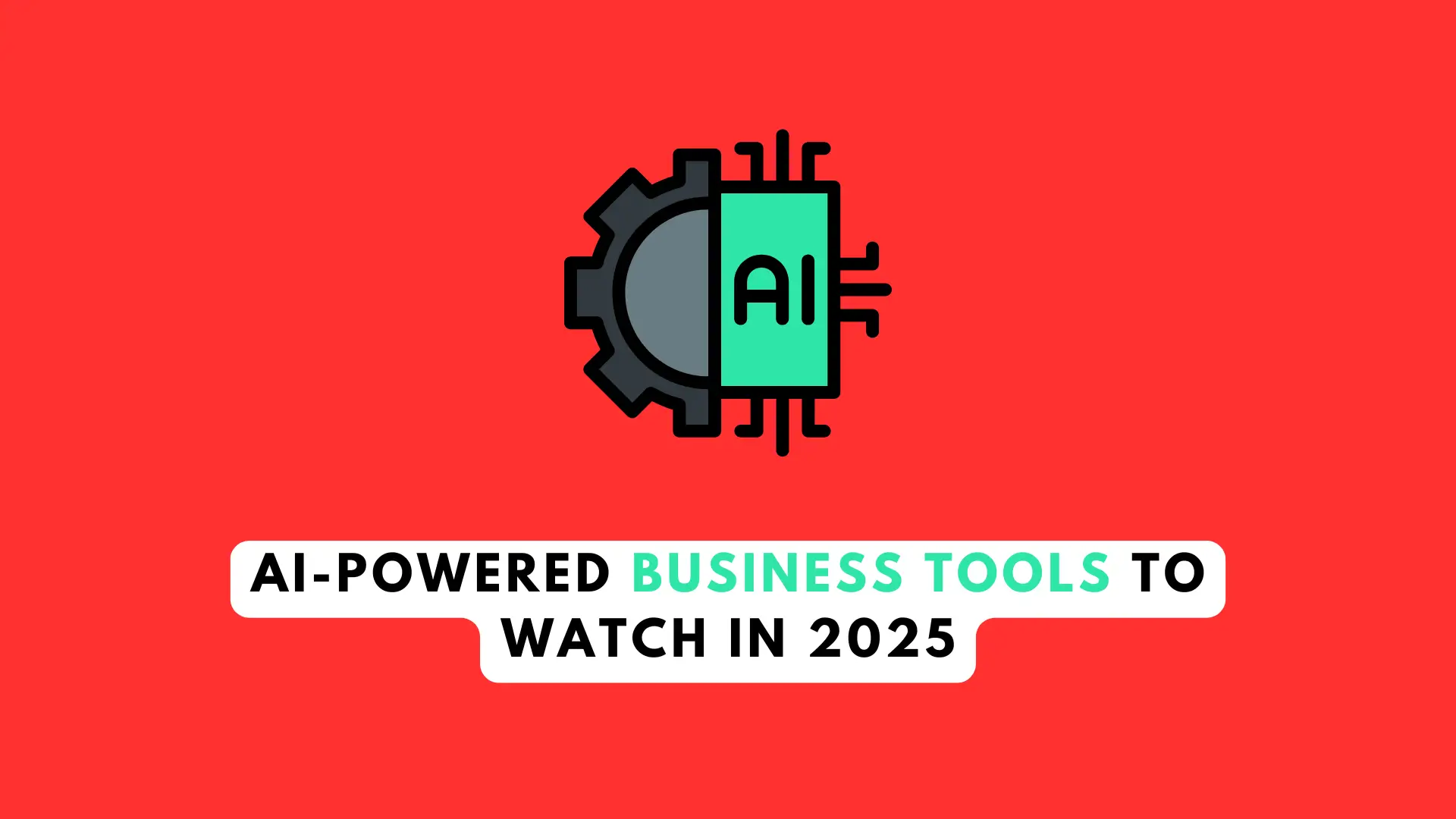Artificial Intelligence (AI) is reshaping the business landscape, and 2025 promises to be a pivotal year for its adoption. From automating repetitive tasks to unlocking deep data insights, AI-powered tools are becoming indispensable for companies aiming to stay competitive. Whether you’re a startup founder or a seasoned executive, integrating the right AI tools can boost efficiency, cut costs, and fuel growth.
In this blog post, we’ll uncover the top AI-powered business tools to watch in 2025. We’ll explore their features, benefits, and practical applications, plus provide tips on choosing and integrating them into your workflow. Ready to future-proof your business? Let’s get started.
Why AI Matters for Businesses in 2025
AI isn’t just a buzzword—it’s a game-changer. By leveraging machine learning, natural language processing (NLP), and predictive analytics, AI tools empower businesses to work smarter. In 2025, these tools will be more accessible than ever, leveling the playing field for small businesses and enterprises alike.
The numbers speak for themselves: a 2024 McKinsey report found that companies adopting AI see a 30% increase in productivity and a 20% revenue boost within their first year. Whether you’re streamlining operations or enhancing customer experiences, AI is the key to staying ahead.
Top AI-Powered Business Tools to Watch in 2025

Here’s a curated list of the best AI tools for business in 2025. Each tool offers unique capabilities to help you thrive in a fast-evolving market.
1. Perplexity AI
-
- Overview: Perplexity AI is an AI-driven search engine that delivers real-time, summarized answers from web data.
-
- Key Features: Natural language queries, instant insights, and citation-backed responses.
-
- Benefits: Saves hours on research, provides reliable data for decision-making, and boosts team productivity.
-
- Best For: Market researchers, content creators, and business analysts needing quick, accurate insights.
2. ChatGPT Enterprise
-
- Overview: Built by OpenAI, ChatGPT Enterprise is a customizable AI solution for business automation.
-
- Key Features: Advanced NLP, customer support automation, and content generation.
-
- Benefits: Reduces staffing costs, offers 24/7 customer service, and creates high-quality drafts in seconds.
-
- Best For: E-commerce businesses and customer-facing teams looking to scale efficiently.
3. Jasper AI
-
- Overview: Jasper AI is a content creation powerhouse designed for marketing and branding.
-
- Key Features: SEO-optimized writing, tone customization, and multi-format content generation.
-
- Benefits: Speeds up content production, ensures brand consistency, and improves search rankings.
-
- Best For: Marketing teams and agencies juggling high-volume content needs.
4. HubSpot AI
-
- Overview: HubSpot integrates AI into its CRM platform to enhance marketing, sales, and service tasks.
-
- Key Features: Automated email campaigns, lead scoring, and predictive analytics.
-
- Benefits: Personalizes customer outreach, boosts conversion rates, and simplifies workflows.
-
- Best For: Businesses already using HubSpot to unify their sales and marketing efforts.
5. UiPath
-
- Overview: UiPath leads in robotic process automation (RPA), using AI to handle repetitive tasks.
-
- Key Features: Process automation, workflow orchestration, and data processing.
-
- Benefits: Eliminates errors, frees up staff for strategic work, and lowers operational costs.
-
- Best For: Finance, HR, and operations teams managing high volumes of routine tasks.
6. Salesforce Einstein
-
- Overview: Einstein is Salesforce’s AI layer, enhancing CRM with predictive insights.
-
- Key Features: Lead prioritization, sales forecasting, and customer behavior analysis.
-
- Benefits: Improves sales accuracy, strengthens client relationships, and drives revenue growth.
-
- Best For: Sales teams using Salesforce to optimize their pipelines.
7. Grammarly Business
-
- Overview: Grammarly’s AI refines business communication with real-time writing suggestions.
-
- Key Features: Grammar correction, tone adjustment, and team style guides.
-
- Benefits: Enhances professionalism, reduces editing time, and ensures clarity.
-
- Best For: Legal, PR, and customer service teams needing polished communication.
8. Tableau
-
- Overview: Tableau uses AI to transform raw data into visual, actionable insights.
-
- Key Features: Data visualization, trend detection, and AI-driven analytics.
-
- Benefits: Simplifies complex data, supports strategic planning, and accelerates decision-making.
-
- Best For: E-commerce, logistics, and data-heavy industries needing clear insights.
9. Zapier AI
-
- Overview: Zapier’s AI connects apps to automate workflows without coding.
-
- Key Features: App integrations, task automation, and custom workflows.
-
- Benefits: Saves time, reduces manual errors, and enhances tool synergy.
-
- Best For: Small businesses automating lead generation or social media tasks.
10. Otter.ai
-
- Overview: Otter.ai transcribes and organizes audio from meetings and conversations.
-
- Key Features: Real-time transcription, keyword search, and collaborative notes.
-
- Benefits: Improves meeting efficiency, captures critical details, and supports remote teams.
-
- Best For: Distributed teams and businesses with frequent meetings.
The Benefits of AI-Powered Tools for Your Business
Why invest in AI tools in 2025? Here are the top advantages:
-
- Efficiency Gains: Automating repetitive tasks frees your team to focus on high-impact projects.
-
- Cost Reduction: AI minimizes the need for manual labor, cutting overhead costs.
-
- Data-Driven Decisions: AI processes data faster and more accurately than humans, delivering actionable insights.
-
- Customer Satisfaction: Personalized experiences—like AI chatbots or tailored marketing—keep customers engaged.
These benefits aren’t theoretical. Businesses adopting AI report measurable improvements in performance, making it a no-brainer for 2025.
How to Choose the Right AI Tool for Your Business
With so many AI tools available, picking the right one can be daunting. Follow these steps to make an informed choice:
-
- Define Your Goals: Are you aiming to automate customer support, improve analytics, or create content? Pinpoint your biggest pain point.
-
- Assess Features: Match the tool’s capabilities to your needs. For example, Jasper AI excels at content, while UiPath shines in automation.
-
- Check Scalability: Ensure the tool can grow with you. HubSpot AI, for instance, adapts as your business expands.
-
- Verify Integrations: Confirm compatibility with your current software. Zapier AI connects with over 5,000 apps, making it highly versatile.
-
- Trial First: Take advantage of free trials to test usability and ROI before committing.
Tips for Integrating AI Tools Into Your Workflow
Choosing a tool is just the beginning—successful integration is what drives results. Here’s how to do it:
-
- Start Small: Test one tool, like Grammarly Business for communication, before scaling up.
-
- Train Your Team: Offer hands-on training to ensure adoption and proficiency.
-
- Track Results: Use analytics to measure the tool’s impact on efficiency and revenue.
-
- Stay Flexible: AI evolves fast—update your tools and processes to keep pace.
For example, a small business might begin with ChatGPT Enterprise for customer inquiries, then add Tableau for data insights as they grow.
Why 2025 Is the Year to Embrace AI Tools
The AI revolution is accelerating, and 2025 will mark a tipping point. Advances in affordability and usability mean businesses of all sizes can harness AI to:
-
- Automate routine tasks
-
- Unlock deeper data insights
-
- Deliver personalized customer experiences
-
- Scale operations cost-effectively
Early adopters will gain a significant edge. Waiting could mean falling behind competitors who are already reaping AI’s rewards.
FAQ: Your Questions About AI Tools in 2025 Answered
Q: What’s the best AI tool for small businesses in 2025?
A: Zapier AI is a top pick. It’s affordable, integrates with countless apps, and automates workflows without technical expertise.
Q: How do AI tools boost productivity?
A: They handle repetitive tasks (like data entry or scheduling), analyze data quickly, and provide insights that streamline decision-making.
Q: Are AI tools budget-friendly?
A: Many offer free tiers or low-cost plans. Tools like Otter.ai and Grammarly Business start small and scale with your budget.
Q: Can AI tools work with my existing software?
A: Yes—tools like Salesforce Einstein integrate with CRMs, while Zapier AI bridges gaps between apps.
Conclusion
The future of business is here, and it’s powered by AI. The AI-powered business tools to watch in 2025—from Perplexity AI to Otter.ai—offer transformative potential for companies ready to adapt. By automating tasks, enhancing decisions, and improving customer experiences, these tools can propel your business to new heights.
Don’t wait for the future to arrive. Start exploring these tools today, integrate them strategically, and position your business as a leader in 2025. Which tool will you try first?
- How to Spot Deepfake Scams in 2025: Simple Tips to Stay Safe
- AI Revolution Unveiled: The 2025 Breakthroughs You Can’t Ignore
